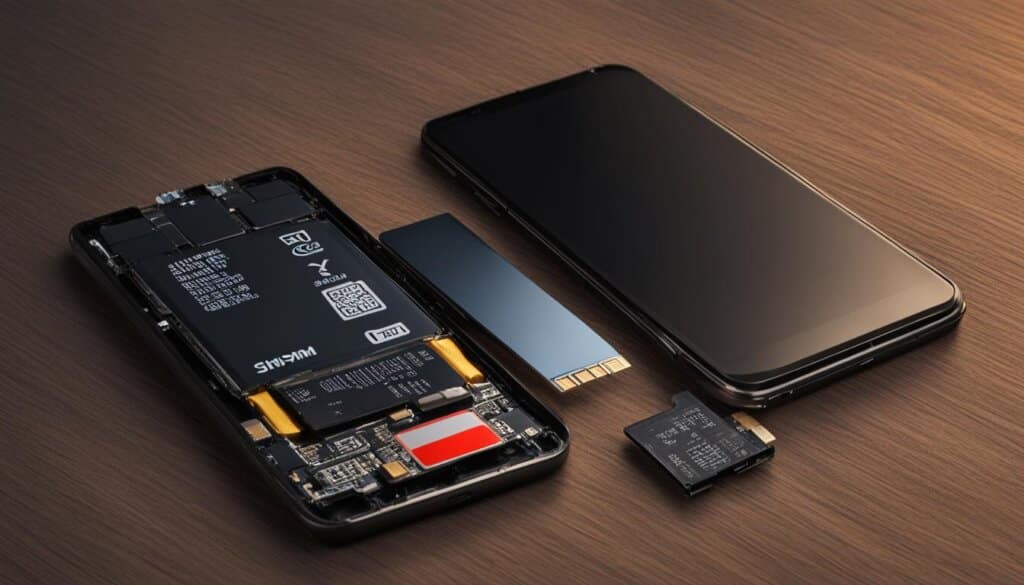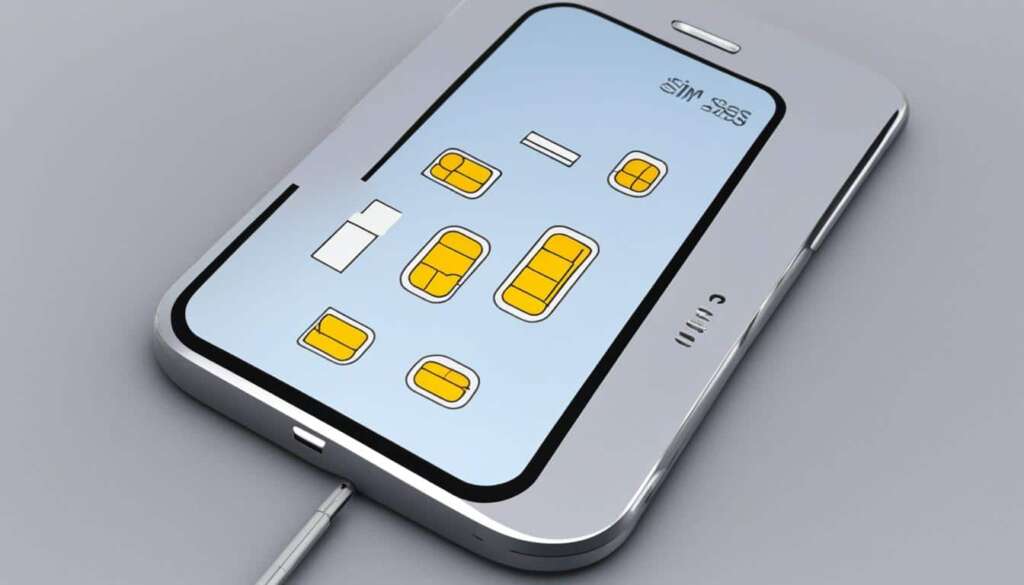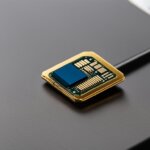Table of Contents
A dual SIM phone is a mobile phone that can use two subscriber identity module (SIM) cards. SIM cards are small cards inserted into phones that carry the user’s mobile number, calling plan, and other data that connects them to a specific cellular network. A dual SIM phone can have two different numbers and networks on a single device.
There are two types of dual SIM implementations: Dual SIM Dual Standby (DSDS) and Dual SIM Dual Active (DSDA). In DSDS, both SIM cards can receive calls or texts, but only one can be used for active data or calls at a time. In DSDA, both SIM cards can be active simultaneously, allowing you to receive calls or texts on one while using data or making a call on the other.
Dual SIM functionality is available in smartphones from various manufacturers, including Samsung, Google, Motorola, Apple, and OnePlus.
Dual SIM phones offer the convenience of having two numbers and networks in one device, making them appealing to a wide range of users. Whether you’re a professional looking to separate your work and personal life, a frequent traveller wanting to avoid hefty international roaming charges, or someone who wishes to take advantage of varying network promotions across different carriers, dual SIM phones provide the flexibility and cost optimization you need.
As technology continually evolves, the future of dual SIM technology is likely to include the emergence of eSIM, or electronic SIM. eSIMs are digital SIM cards that eliminate the need for physical slots and allow users to switch between networks digitally. This advancement could potentially redefine the understanding of dual SIM phones and render traditional physical SIM cards obsolete.
In the following sections, we will delve deeper into how dual SIM phones work, explore their advantages and uses, compare them to single SIM phones, and discuss the potential future of dual SIM technology.
How Dual SIM Phones Work
A dual-SIM phone is a device that has two SIM slots, allowing users to effectively have two phones in one. SIM cards are the brains of mobile devices, tying personal information to the phone and enabling calls, messages, and internet connectivity. With a dual-SIM phone, users can manage two separate contact lists and even have different network providers.
It works by having two separate SIM cards, which serve to separate phone calls, text messages, contact lists, and sometimes network providers. This means that each SIM card operates independently, allowing users to switch between them as needed.
There are two types of dual-SIM phones:
- Dual SIM Dual Standby (DSDA): In this mode, one SIM is always on standby while the other is active. This means that users can receive calls or text messages on one SIM while using the other for active data or calls. However, only one SIM can be active at a time.
- Dual SIM Full Active (DSFA): DSFA phones allow seamless switching between SIM cards, allowing both to be active simultaneously. This means that users can receive calls or texts on one SIM while using data or making a call on the other, providing greater flexibility and convenience.
Dual-SIM phones are particularly popular in countries where switching between network providers is beneficial for businesses to minimize costs. The ability to have two different network providers on a single device allows users to take advantage of the best available offers and promotions from multiple networks.
Additionally, some dual-SIM phones also support eSIM, which is a digital SIM card that does not require a physical slot. This allows users to have a virtual SIM card alongside their physical ones, expanding their options for network connectivity.
Advantages and Uses of Dual SIM Phones
One of the main advantages of dual SIM phones is the ability to have a second phone number. This is particularly useful for individuals who want to separate their work and personal lives or maintain a better work-life balance. With a dual-SIM phone, users have two different phone numbers, allowing calls and texts to go to the SIM card associated with the specific number.
This increased privacy and separation of identities can be beneficial for professionals, online buying or selling, dating, and any other activities that involve working with strangers for an extended period.
Additionally, there are apps like Burner that provide a second phone number without the need for a second device. Burner app generates a second phone number on your mobile device and reroutes calls sent to that number to your phone, keeping your personal number private and secure.
Using a dual SIM phone and applications like Burner not only provide a convenient way to manage multiple phone numbers, but they also offer increased privacy and control over who has access to your personal information. This is especially important in today’s digital age where maintaining privacy and safeguarding personal data is a growing concern.
Dual SIM Phones vs. Single SIM Phones
The main difference between dual SIM phones and single SIM phones lies in the ability to have two phone numbers on one device with dual SIM phones. This offers greater flexibility, allowing users to maintain separate personal and business lines. Dual SIM phones are especially advantageous for travellers, as they can use their primary SIM alongside a local SIM to avoid hefty international roaming charges.
From a cost optimization perspective, users can take advantage of varying network promotions or plans available across different carriers. With a dual SIM phone, one can switch between networks, selecting the most affordable option for calls, texts, and data usage. This feature can lead to significant savings, particularly for frequent travellers or individuals with varying communication needs.
However, dual SIM phones also come with a few considerations. Running two networks concurrently can lead to accelerated battery consumption, as the device needs to maintain connections with both SIM cards simultaneously. Users may also need to manage contacts, call logs, and messages across two SIMs, ensuring they stay organized and avoid confusion. Additionally, compatibility issues can arise if the two SIMs function on different network frequencies or standards, requiring users to select compatible SIM cards for optimal performance.
Benefits of Dual SIM Phones:
- Flexibility to use two phone numbers on one device
- Separate personal and business lines for better organization
- Potential cost savings through optimized network selection
- Ability to avoid hefty international roaming charges
Considerations for Dual SIM Phones:
- Increased battery consumption due to running two SIM cards
- Managing contacts, call logs, and messages across two SIMs
- Potential compatibility issues with different network frequencies or standards
Overall, dual SIM phones offer a convenient solution for individuals who require two phone numbers and desire the flexibility to choose different network providers or plans. However, users must consider the potential impact on battery consumption and manage their communication data effectively across the two SIMs to fully optimize their device’s capabilities.
For a comprehensive comparison between dual SIM phones and single SIM phones, refer to the table below:
| Dual SIM Phones | Single SIM Phones |
|---|---|
| Ability to have two phone numbers on one device | Restricted to one phone number per device |
| Flexibility to maintain separate personal and business lines | No option for separate lines on a single device |
| Potential cost optimization through network selection | Limited to one network provider |
| Ability to avoid international roaming charges | Likely to incur roaming charges when travelling |

The Future of Dual SIM Technology
The future of dual SIM technology is set to transform with the emergence of eSIM, or electronic SIM. Unlike traditional physical SIM cards, eSIMs are digital SIM cards that eliminate the need for physical slots and enable users to switch between networks digitally. This technological advancement has the potential to render traditional SIM cards obsolete and revolutionize the concept of dual SIM phones.
With eSIM, users can seamlessly switch between different network providers without the hassle of physically changing SIM cards. This opens up a world of convenience and flexibility, allowing individuals to effortlessly switch networks based on factors such as coverage, pricing, and quality of service. The ability to switch networks digitally paves the way for a more streamlined and efficient user experience.
As technology continues to evolve, the mobile industry is poised to adapt to the changing demands of users. Dual SIM phones have gained widespread popularity due to their ability to offer multiple networks on a single device, catering to the needs of professionals and everyday users alike. The convenience and cost optimization offered by dual SIM phones make them increasingly valuable in our interconnected world.
As eSIM technology continues to mature and gain wider adoption, the use of dual SIM phones is expected to become even more prevalent. The concept of having two or more networks on a single device is becoming increasingly important, giving users the freedom to switch between networks and take advantage of the best available options. The future of dual SIM technology is bright, offering individuals greater flexibility and control over their mobile connectivity.
FAQ
What is a dual SIM phone?
A dual SIM phone is a mobile phone that can use two subscriber identity module (SIM) cards, allowing for two different numbers and networks on a single device.
How do dual SIM phones work?
Dual SIM phones have two SIM slots that separate phone calls, text messages, contact lists, and sometimes network providers, allowing users to manage two separate contact lists and even have different network providers.
What are the advantages and uses of dual SIM phones?
Dual SIM phones offer the ability to have a second phone number, allowing for increased privacy and separation of identities. They are beneficial for professionals, online buying or selling, dating, and any other activities that involve working with strangers for an extended period.
How do dual SIM phones differ from single SIM phones?
The main difference is the ability to have two phone numbers on one device with dual SIM phones, offering greater flexibility and allowing users to maintain separate personal and business lines. Dual SIM phones are also advantageous for travellers to avoid hefty international roaming charges.
What is the future of dual SIM technology?
The future of dual SIM technology is likely to evolve with the introduction of eSIM, or electronic SIM, which are digital SIM cards that do not require physical slots. This advancement could potentially render traditional physical SIM cards obsolete and redefine the understanding of dual SIM phones.












